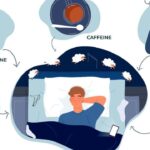Among infections that contribute to sexually transmitted diseases (STDs), four currently curable STDs are Chlamydia, Gonorrhea, Syphilis, and Trichomoniasis.
Overview
Sexually transmitted diseases (STDs) are common infections and pass from one infected person to another through vaginal, oral, and anal sex during unprotected sex. Some cases are just through skin-to-skin contact, such as HPV, herpes, and syphilis. Many STDs show no signs or symptoms. Even with no symptoms, some transmission still happens without acknowledgment. Anyone sexually active can get an STD.
1. Chlamydia
Most people who have chlamydia do not recognize any symptoms. If they do have symptoms, the most common symptoms in women are:
pain when urinating
abnormal vaginal discharge
pain in the lower belly
pain or bleeding during sex
bleeding between periods
In men, symptoms include:
pain or burning when urinating
penis discharge
pain or swelling in the testicles
Even though there might not be any signs of chlamydia, the disease still leads to serious health problems if left untreated. Women have a higher possibility of health problems from chlamydia than men do. Untreated chlamydia can be the cause of pelvic inflammatory disease (PID). In both genders, it increases the risk of acquiring or transmitting HIV.
2. Gonorrhea:
The disease often progresses silently in the early stages, making it difficult to detect. Typical symptoms of gonorrhea include abnormal discharge from the vagina or penis, pain when urinating, and in women, bleeding between periods and abdominal or pelvic pain.
Antibiotics have successfully treated gonorrhea. If you do not treat gonorrhea, it can lead to fatal and permanent health problems and increases the risk of acquiring or transmitting HIV in both women and men.
3. Syphilis:
Syphilis symptoms develop through stages:
Primary stage
You may notice a single sore or multiple firm and round sores. Those sores are hard to detect as they are painless and appear at the location where syphilis enters the body, mostly in the penis, vagina, or around your bottom (anus). The chancre lasts 3 to 6 weeks and heals on its own. However, syphilis will move to the second stage if you leave it untreated.
Secondary stage
After the healing of the chancre, you may experience skin rashes on any area of your body. Other symptoms may include fever, swollen lymph glands, weight loss, muscle aches, hair loss, fatigue, etc.
The latent stage
If you are not seeking treatment, even though all symptoms from the secondary stage have already healed, syphilis will progress to the latent stage. Syphilis stays inside the body for years and might continue to move to the tertiary stage.
Tertiary Stage
This stage in syphilis is rare, yet it still happens in some untreated syphilis cases and causes dangerous complications by affecting multiple organ systems, including the heart, blood vessels, the brain, and the nervous system. Tertiary syphilis occurs 10–30 years after the original, untreated infection.
4. Trichomoniasis
Most people infected by Trichomoniasis do not experience any signs or symptoms. If there are symptoms, patients may notice unusual discharge, discomfort when urinating, and irritation in various degrees at the penis or genitals areas. Without treatment, the infection can last for months or even years.
Trichomoniasis can increase the risk of acquiring or transmitting HIV in both women and men.
Prevention and Treatment
Although most sexually transmitted diseases show little or no signs and symptoms, the infection continues to progress to worse stages if left untreated, leading to many fatal conditions that affect other organs. They might also increase the risk of developing incurable STDs. Therefore, early diagnosis and treatment are extremely important. Withou curable STDs, patients shall follow the doctor’s instructions exactly as directed and not stop the treatment without the doctor’s approval just because the symptoms have subsided. There are many stages when the disease shows no visible signs or symptoms, yet the infection continues.
Many STDs share similar symptoms and are easily confused with common diseases. Do not treat the symptoms on your own at home with over-the-counter medicines because if you are infected with a STD, it might worsen the disease, and hinder the healing process.
Moreover, it is always essential to prevent yourself from those infections by having a healthy sex life and doing annual check-ups for early detection.














